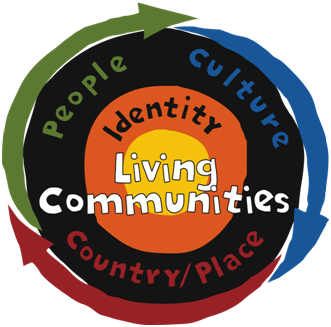1:5 — How Evil Came into the World
Your task is to take the story about how evil comes into the world, the story King tells about the Witches’ convention in Chapter One of The Truth about Stories, and change it any way you want, except the ending. You can change to place, the people, the time – anything you want. But, your story must have the same moral – it must tell us how evil came into the world and how once a story is told, it cannot be taken back.
 Stories are living things–and they are dangerous. When evil came into the world, it was in the form of a story. Every evening, the creatures of the world would gather together and share their daily stories. The birds would tell stories of the sky and all the creatures they had spied on. The bears would share their struggles to scavenge the ripest berries to prepare for winter. The snakes would share their difficulties in finding warm rocks to fight the constant chill of their bodies. The stories were all good and the creatures of the world were content.
Stories are living things–and they are dangerous. When evil came into the world, it was in the form of a story. Every evening, the creatures of the world would gather together and share their daily stories. The birds would tell stories of the sky and all the creatures they had spied on. The bears would share their struggles to scavenge the ripest berries to prepare for winter. The snakes would share their difficulties in finding warm rocks to fight the constant chill of their bodies. The stories were all good and the creatures of the world were content.
One evening, a newcomer joined the gathering. None of the creatures afterwards could recall exactly who it was, but all of them remembered the story that was told. The newcomer shared a warning with the others. A great and terrible creature had been sighted. Hairless, clawless and without visible defenses, the creature should have been harmless, said the newcomer. But this strange creature isn’t harmless, insisted the newcomer. Beware, beware, beware.
The creatures at the gathering laughed. If this new creature could not fight, it could not be so terrible. We will attack its eyes, claimed the birds. I will attack with my claws and teeth, chimed the bear. I will coil my great body around it and constrict around its lungs, added the snake. All the other creatures agreed and added their own strategies, until all of them felt confident that this new creature could do them no harm.
Laugh if you want, the newcomer warned, but they are coming. They are cunning and cruel and full of fear. Their eyes see only a dead, cold world. They are deaf to the speech of other animals, deaf to the wind in the trees and the babbling brooks. But worst of all, they fear. They fear the world they cannot hear. They destroy what they fear. They destroy even themselves. Beware, beware, beware. They are coming now.
All of the other creatures had grown silent and still. We do not like your story, take it back. Take it back. Take it back.
But it is too late. They are already coming.
Commentary
I found this form of storytelling to be very difficult. While I have crafted fiction frequently in the past, they have all been written storytelling; the Genesis version of events, with “rhetorical distance,” to use Thomas King’s example, as opposed to oral storytelling, involving a performance for an audience (22). I researched other creation stories in trying to come up with my own (I also found what I think is the full version of Leslie Silko’s creation story, if anyone was curious). I discovered one very important thing on this journey: I suck at oral storytelling. It’s harder. As an oral storyteller, you can’t just rely on your words to paint the picture–though I’m sure this helps. You need to act, use different tones and voice, draw people in. Even a short story like the one I wrote above involves a performance, or else my listeners lost their attention. I’m not ashamed to say I researched for tips and tricks. I was in over my head and needed to tell a good story at least once! My endeavors led me places such as this, and I learned something crucial: there isn’t a lot of information of telling a story specifically orally. Did anyone else try to research something similar in preparation and encounter the same result?
Works Cited
“Image.” Digital Painting. Magic Jargon. Magic: The Gathering, 9 Sept 2006. Web. 30 May 2016.
King, Thomas. The Truth About Stories: A Native Narrative. Toronto: House of Anansi Press, 2003. Print.
Silko, Leslie. “[Long Time Ago].” First World Stories, n.d. Web. 30 May 2016.
Ware, Tom. “Tips From a Master Storyteller.” The New Zealand Guild of Storytellers, n.d. Web 30 May 2016.

 Thanks to the realm of cyberspace, the supposed line between oral and written culture is even more indistinct. If an oral culture is defined by its lack of substance and malleability, how do we define such categories as audio-recordings or sound-files which can now saturate the online world in a permanent way? We cannot only store this form of oral culture, but re-play it in its exactness again and again, just as one could read and reread a written text. In contrast, if written work is defined by its permanence or ability to endure the ages, how to we categorize the instant message or websites (like Wikipedia) that are left free to editorial change by the masses?
Thanks to the realm of cyberspace, the supposed line between oral and written culture is even more indistinct. If an oral culture is defined by its lack of substance and malleability, how do we define such categories as audio-recordings or sound-files which can now saturate the online world in a permanent way? We cannot only store this form of oral culture, but re-play it in its exactness again and again, just as one could read and reread a written text. In contrast, if written work is defined by its permanence or ability to endure the ages, how to we categorize the instant message or websites (like Wikipedia) that are left free to editorial change by the masses? I am a storyteller; a writer. I am a fourth year literature major at UBC. This blog will be used to record my journey into ENGL 470A Canadian Studies. I am looking forward to the communication of classmates as we begin to explore the relationships between literature and storytelling in both its modern and historical aspects. I am personally taking this course in the hopes of adding flesh to my bare-bones understanding of identity. My own identity is limited to that of being Canadian–I do not know my ancestral history or their stories. However, I was born on Canadian soil, and I believe I should know the stories surrounding the land I call my home. This, and my claim to being a writer myself, has led to my interest in this particular course.
I am a storyteller; a writer. I am a fourth year literature major at UBC. This blog will be used to record my journey into ENGL 470A Canadian Studies. I am looking forward to the communication of classmates as we begin to explore the relationships between literature and storytelling in both its modern and historical aspects. I am personally taking this course in the hopes of adding flesh to my bare-bones understanding of identity. My own identity is limited to that of being Canadian–I do not know my ancestral history or their stories. However, I was born on Canadian soil, and I believe I should know the stories surrounding the land I call my home. This, and my claim to being a writer myself, has led to my interest in this particular course.